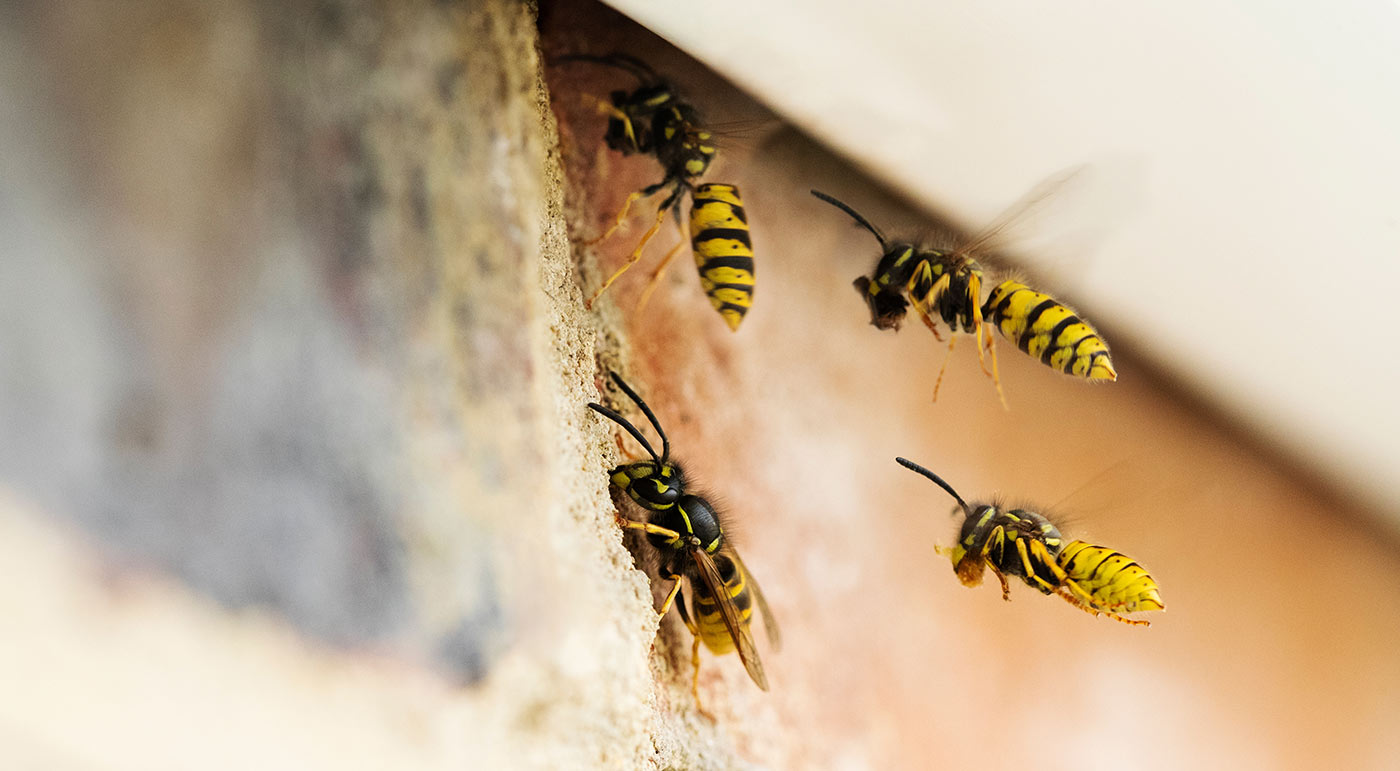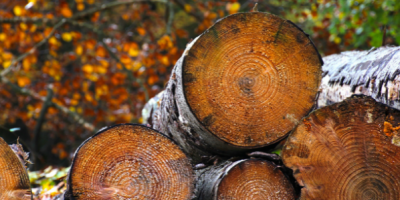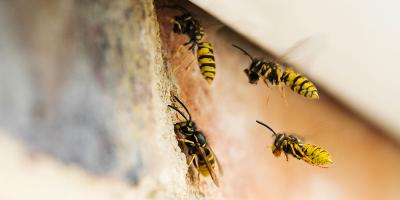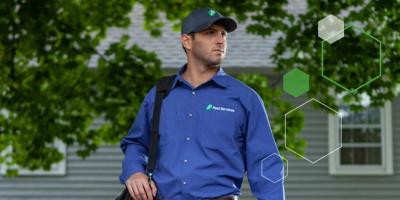The Most Dangerous Pests in New England

Using the word “dangerous” in association with animal pests of New England doesn’t quite hold the same magnitude as those of Florida, but should they? While Florida seems to possess an abundance of dangerous animal species including a variety of poisonous snakes, venomous fire ants, killer honeybees, aggressive hornets and wasps, venomous spiders, pet and human eating alligators, and more, New England has a couple pest species that can be categorized as even more dangerous than those in Florida because of the number of humans impacted by the diseases and damages caused by these pests.
Because news stories about humans killed by animals are often sensationalized by the media, our perceptions of the real present dangers are often skewed to faraway places. Fatal alligator attacks are rare with 24 deaths in Florida since 1973. Venomous snake bites happen and lead to roughly 5 deaths per year in the United States. However, as reported by the CDC, deaths associated with stinging insects from 2000 to 2017 were 1109, averaging about 62 deaths per year and a high of 89 deaths in 2017. Thousands more people require immediate medical intervention from stings that cause anaphylaxis.
In review of New England’s most notorious pests, we came up with a top five list. The list below is ranked by the number of humans detrimentally impacted by the pest each year.
New England’s Top 5 Most Dangerous Pests:
- Blacklegged Tick (aka deer tick or Lyme tick):
Blacklegged ticks are responsible for transmitting Lyme disease and other tick-borne diseases to humans throughout the United States. There are now over 476,000 reported cases of Lyme disease every year in the US with a major concentration of cases located in the New England States as reported by CDC. The numbers continue to rise year after year because clinicians are becoming more skilled at Lyme disease diagnosis and ticks are becoming more plentiful.
Unfortunately, children between the ages of 3-14 are the most vulnerable of our population due to the amount of time spent on outdoor activities. The next vulnerable age group is over 50 due to their time spent golfing, hiking, and gardening. Lyme disease caught early is a treatable condition. However, once Lyme disease reaches late stages of development, it is a debilitating condition that can haunt people for the rest of their lives. Deaths associated with Lyme disease are rare but do occur.
- Mosquitoes:
Many mosquito species that are endemic to the New England region are disease vectors. The better-known diseases include West Nile Virus, Jamestown Canyon Virus, Eastern Equine Encephalitis (EEE), Dengue, Malaria, and Yellow Fever. Somewhat fortunate for New Englanders, most of these diseases are not common to our region. Each year however, cases of West Nile Virus, Jamestown Canyon Virus, and EEE are reported during the mosquito season, April through October. For some people, these diseases are fatal.
All mosquitoes of concern can be found in most backyards, parks, wetlands, and forests, so bite prevention through personal protection and mosquito management programs are recommended. Not every mosquito is weaponized with one of the potentially deadly disease organisms but getting bitten by a disease carrying mosquito is generally bad news for the victim.
For mosquito and tick bite prevention, exposed skin can be protected with an EPA approved repellent containing active ingredients such as picaridin, IR35, and DEET. Outdoor clothing can be treated with a fabric repellent called permethrin or clothes can be purchased that are impregnated with the same active ingredient. Always read the product label directions and remember that only EPA labeled materials have been rigorously tested and repellency duration verified. Your backyard can be effectively treated to prevent mosquitoes and ticks from harboring on your property and waiting for their next blood meal.
- Stinging Insects (bees, wasps, hornets):
While stinging insects serve beneficial roles within their ecosystem, when humans come into direct contact with their nests or accidentally step on one, bad things can happen quickly. All stinging insects possess stingers and venom sacks, and will use them when they feel threatened, handled, or when guarding their hive. Their stings are immediately painful and potentially life-threatening for someone with a compromised immune system or severe hypersensitivity.
Anaphylactic shock onset can be delayed or sudden. Stinging insects kill more people each year than do alligators and venomous snakes combined. JP’s best advice is to be aware of your surroundings and stay far away from areas where stinging insects are active, especially their nests. Leave the treatment and removal of nests/hives to JP Pest Services specialists who have the right protective gear and experience to safely deal with stinging insects. The risk of injury, hospitalization, or worse is not worth the savings associated with a do-it-yourself treatment.
- Rodents (mice/rats):
Mice and rats are carriers of diseases. While contracting fatal illnesses from mice or rats is rare, some victims of exposure do die each year. The primary way that rats and mice spread germs is via their latrine habits. Both types of animals urinate and defecate frequently during their efforts to identify food, water, and shelter thereby leaving contaminated surfaces and food everywhere they traveled.
Rodents also carry parasites on their bodies. These parasites include fleas, mites, and ticks and will infest homes, and bite people and pets. Additionally, rats and mice must continuously gnaw on building materials to maintain their teeth. Unfortunately, some of these materials include the electric wires of your house and vehicles. Damage to live electrical wires can cause house fires, and in lesser cases, expensive repairs.
Rodent trapping and exclusion programs require expertise and proper materials to eliminate infestations and prevent future rodent entry to buildings.
- Wildlife (racoons, squirrels, bats):
There are many health and property concerns associated with wildlife sharing space within your home. Bats enter homes, usually attic spaces, for convenient roosting sites and to over-winter. Diseases associated with bats include rabies and histoplasmosis. Rabies can be transmitted to humans via a bite or scratch, and the disease is fatal if not treated. Histoplasmosis is transmitted by breathing airborne dust contaminated with bat guano. Bat bugs, very similar to bed bugs, will feed on humans in the absence of bats or when bat big populations are large.
Squirrels can introduce fleas into the home, but more concerning is the great deal of damage they can create in a short period of time. Squirrels damage floors, ceilings, and insulation with their latrine habits. They also are known to gnaw on live wires that can lead to fires and expensive repairs. Trapping and exclusion practices are generally required to stop squirrels from entering your home and to end their destructive habits once inside.
Racoons are carriers of rabies and capable of transmitting the disease if they attack. Racoons are highly aggressive, especially when they are protecting their young. Attempting to DIY and manage raccoons that occupy your home is not advisable unless you are licensed and trained to do so. Once all animals have been removed from the home, proper construction repairs must be made to prevent future reinfestations of racoons, squirrels, and bats.
If you are interested in protecting your home and family from these dangerous pests, please contact JP Pest Services today.



